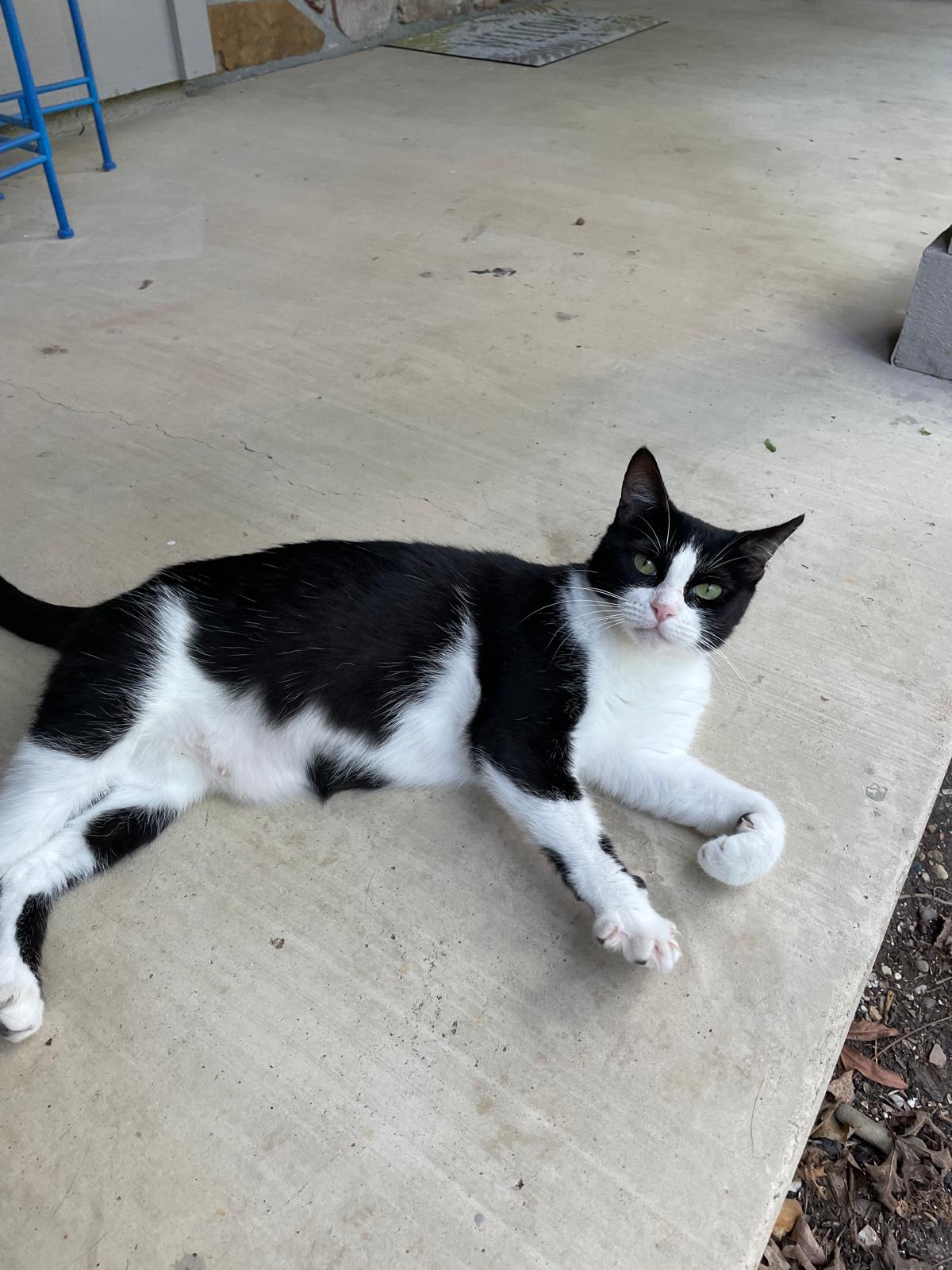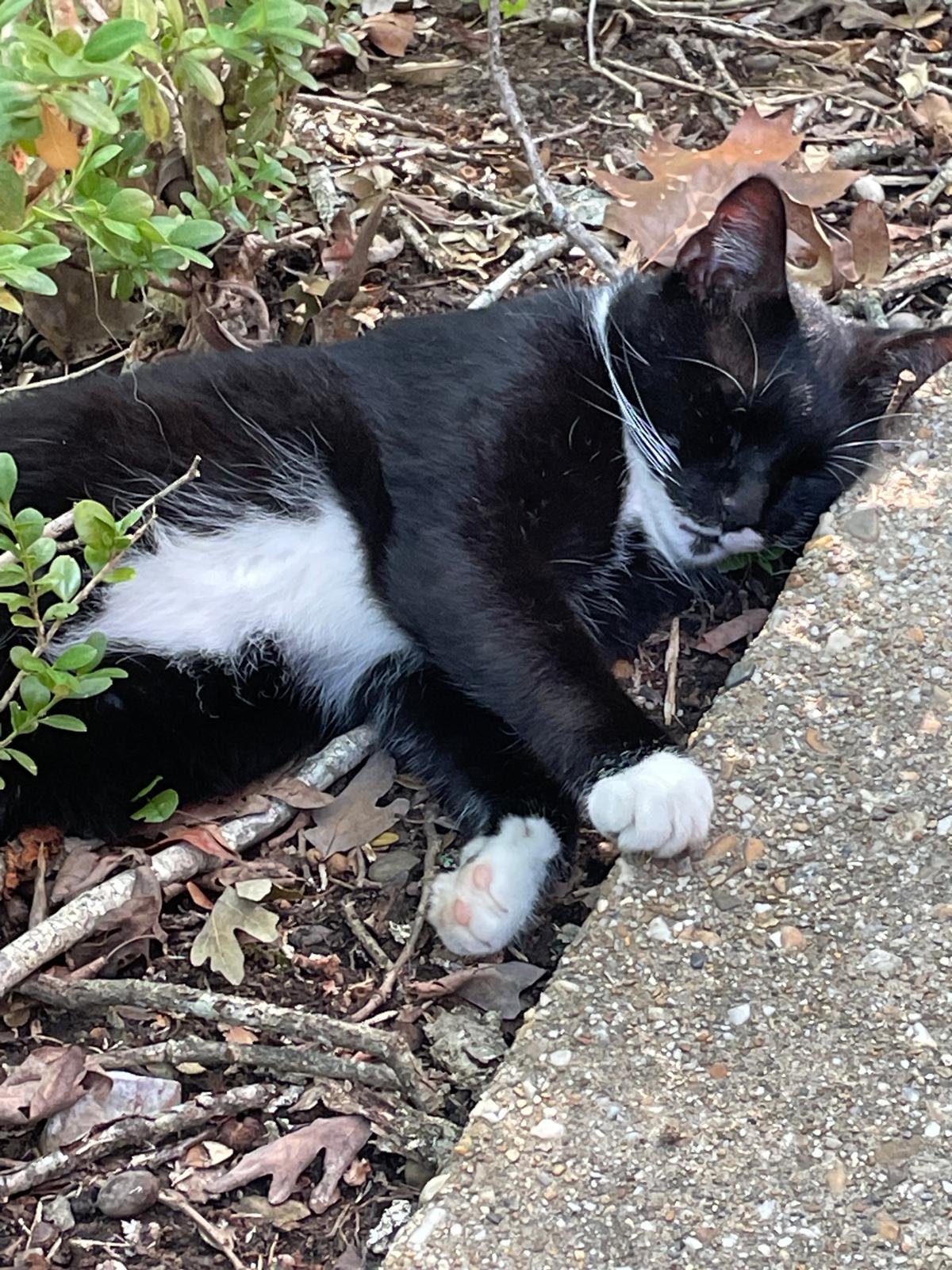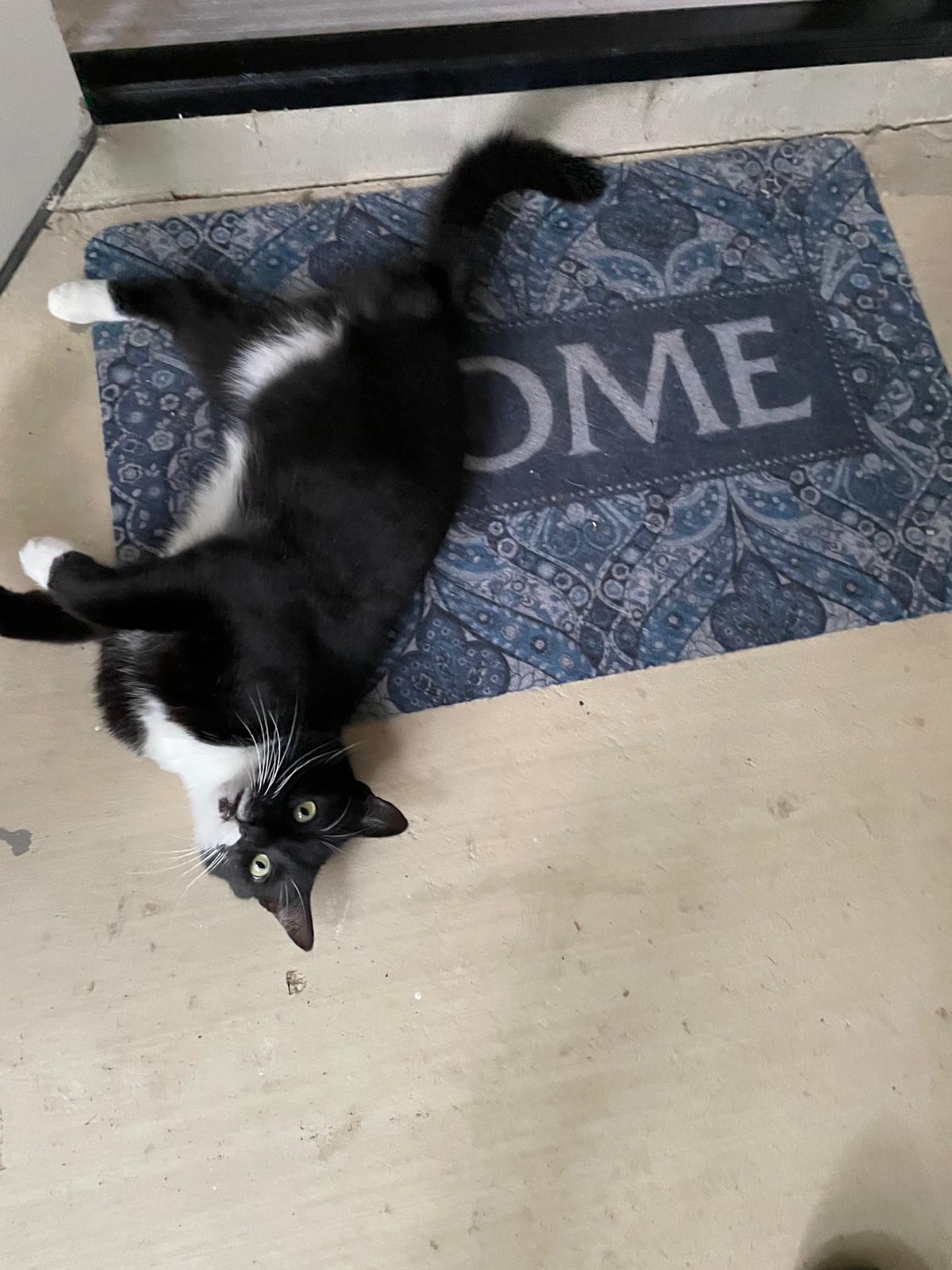
How Two Stray Cats Taught Us About Trust and Healing
Learning the Rhythm of Outdoor Cats
It’s been about eight weeks since Bart and Sissy chose us. Or maybe we chose each other. Either way, we’re getting into a rhythm now—feeding times, favorite nap spots, regular rituals of trust and affection.
They know the routine.
Every morning and evening, like clockwork, they’re waiting by the door. We never actually told them what time meals are, but somehow, they just… know.
And they’re always right on time.
Sissy: The Queen of the Porch (and the Cat House...and Your Heart)

Sissy has truly settled in. She rarely leaves the yard—except for a quick trip across the street or into the next-door neighbor’s driveway when we’re out walking the dogs. It’s like she wants to tag along, like she’s part of the pack.
Most of the time though, she’s lounging in one of her favorite spots: nestled under the bush, curled up in one of the many chairs we’ve put out just for them, or finally sleeping inside the $100 cat house she spent weeks pretending didn’t exist.
Now she slips in like it’s no big deal, like she hasn’t completely fallen in love with it. But we see her. She’s the queen of comfort, and that little house is clearly part of her kingdom.
Sissy has become incredibly affectionate. She asks for pets with the softest meow, and she’s got the sweetest little purr. She rubs your legs like she’s known you forever. She stretches, rolls, flops, and full-body purrs like a pro.
She’s playful and present and stays close to home. She even keeps an eye out for Bart when he’s off on one of his mysterious outings. Once he’s home safe, she relaxes into deep rest—like her job is done for the day.
But as sweet as she is, she comes with one very important PSA:
When Sissy flops over, do not fall for it. We repeat—do not go for the belly. It’s not a trap, exactly… but it’s also not safe. She turns into a bitey, kicky little blur of excitement. It’s not mean—it’s just who she is.
She gets overwhelmed with the affection and channels it into full throttle play mode, claws and all. You only have to ignore the warning signs once to learn your lesson.
We’re learning to love her exactly as she is—sweet, sassy, and full of surprises. And she seems to be loving us back, in her own perfectly Sissy way.
Bart: Trusting a Wandering Outdoor Cat

Bart is different. He’s more of a mystery. A wanderer. He shows up for meals, loves affection, even leans into it now with those deep, grateful purrs. But he still likes to keep us on our toes. He has his favorite nap spots.
Sometimes it’s under the car, sometimes he’s tucked into one of the bushes along the front walkway, but it’s always somewhere that gives him a clear line of sight.
He’s our sentinel, keeping an eye on things.
And yet, just when we think we’ve got his rhythm down, he changes it. A few times now, he’s missed breakfast entirely. The first time, we’d gotten up early and it was still dark. He wasn’t there—and it felt off.
But he showed up at sunrise like it was no big deal.
The last time, though, he was gone most of the day. No breakfast. No lunch. Just… gone.
And even though we know he’s an outdoor cat—has always been, long before he came to us—it still hit hard. We didn’t want to worry, but we did. We didn’t want to think “what if”, but we did.
We checked all his favorite places, across the street, his old house, the neighbor’s deck where he’s been known to find some pets and a meal. He was nowhere to be found.
And when he finally showed up, late in the afternoon, we breathed a little easier.
But it made us realize something important.
We can’t change who he is. We can’t contain him. We can’t force a wild heart to stay put—not even out of love.
Especially not out of love.
Finding Safe Spaces During Storms

What we can do is meet him where he is. Let him be exactly who he is. Keep the food warm. Keep the door open. Give him the space he needs to roam and trust that he knows how to take care of himself.
And when he comes home, we greet him with open arms and a full dish.
We’ve thought about closing the garage door at night, keeping them safe while they sleep. And maybe we will someday. They both use the garage regularly now—Sissy has her secret bin under the workbench, and Bart sometimes naps in the chair.
They know it’s a place of safety, and that shift has been beautiful to witness.
During a storm weeks ago, they both ran out of the garage to hide under the car. Bart even climbed up inside it somehow, trying to get away from the thunder.
But that’s changing. Now when it storms, they run into the garage. Neither one of them like thunder. Bart stays near the door just in case he needs to escape. Sissy hides, deep behind her bin under the workbench.
They now choose the garage as a refuge from danger, which is a relief! That’s trust.
We’re learning to love both of them for who they are—Sissy, with her sweet soft purrs and leg rubs, and Bart, with his wild soul and deep, quiet trust.
And honestly?
It feels like the greatest privilege.
What Outdoor Cats Can Teach Us About Trust

There’s something about loving outdoor cats that feels a lot like loving people—or parts of ourselves—that don’t always stay close. That don’t always follow the rules. That sometimes wander off just when things are getting good.
You can’t force an outdoor cat to trust you.
You have to meet them where they are.
You show up.
You keep the food warm.
You leave the door open.
And eventually, if you’re consistent enough… they come inside.
But not on your timeline.
They come when they feel safe. When they’ve decided you’re safe. When their nervous system says, “Yes. Here. Now.”
And healing is kind of like that, too.
You can’t force your inner child—or your nervous system, or your heart—to trust something it hasn’t experienced yet. But you can create the conditions for safety.
You can soften your edges, steady your presence, and show up every day like clockwork.
You can keep the door open.
And eventually, the parts of you that used to bolt or shut down or hide will start coming closer.
They’ll test the waters.
They’ll learn your rhythm.
And when the next storm comes?
Maybe they’ll choose to stay.
That’s what we’re learning—about cats, about healing, about ourselves.
You can’t rush trust. But you can become a safe place for it to land.
That’s what The Inner Child Revolution is really about.
Not pushing or fixing or forcing change, but learning to show up for the parts of you that never learned safety in the first place.
It’s about creating a rhythm of care, one small moment at a time, until those scattered, guarded, runaway parts of you start to soften.
If you’re ready to build a home your inner child wants to come back to—
we’d love to welcome you inside.

